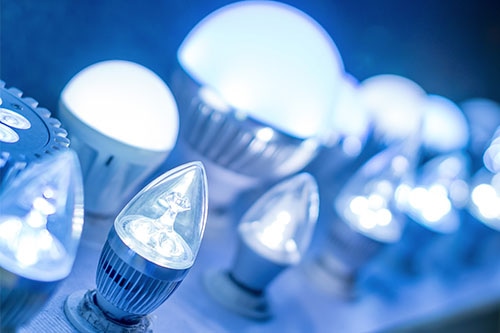
You have probably heard lot about how you could save energy and money by switching to LED from traditional methods of lighting. It’s true. When you see how this new type of lighting compares to its competitors in terms of efficiency, lifespan and environmental impact, it is clear that LED lighting is by far the smartest solution.
What exactly is LED? Light-emitting diodes, most commonly referred to as LEDs, are a form of solid-state lighting that is renowned for its energy-saving ability as well as its longevity. Other forms of lighting such as fluorescent or incandescent are made from filaments or gases in glass bulbs. LEDs are different because they are tiny capsules where tiny chips are placed on heat-conducting material. LEDs are smaller than fluorescent and incandescent bulbs, allowing them to be used in spaces that are too small for these other types of lighting. Furthermore, LEDs give off light in a specific direction, making them more efficient when in use than incandescent and fluorescent bulbs, which burn through energy by emitting light in all directions.
Not only will LEDs save you money on your electric bulb, they also have to be replaced less frequently than other bulbs. This is because LEDs last much longer than other kinds of lighting. The average lifespan of a high-power white LED is approximately 35,000 to 50,000 hours. This is pretty impressive compared to 750 to 2,000 hours for an incandescent bulb, 8,000 to 10,000 hours for a standard compact fluorescent bulb and between 20,000 and 30,000 hours for a linear fluorescent light bulb.
LED lighting is also good for the environment. These eco-friendly bulbs contain no toxic materials and can help you to reduce your carbon footprint by up to one-third. By contrast, many fluorescent lighting bulbs contain a combination of materials such as mercury that are harmful to the environment.